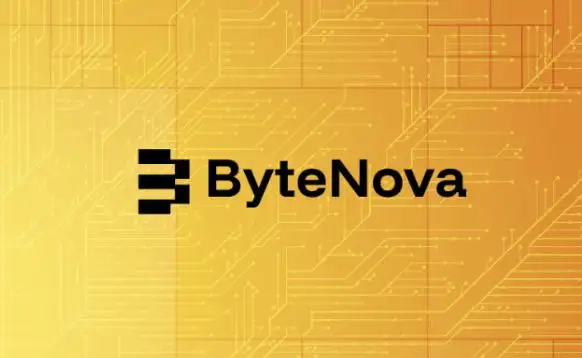
In an age when currency is increasingly digital, untethered from anything physical, and manipulated with the click of a central banker’s mouse, it’s worth asking: what if the future of money isn’t virtual, but elemental?
What if, after a century of experiments, we return to gold—not as a relic of the past, but as an anchor for the future?
For most of human history, gold wasn’t just wealth—it was money. From ancient empires of Egypt and Persia to the Roman denarius and the gold dinar of the Islamic caliphate, gold provided a durable, universal standard for commerce. It held intrinsic value, could not be debased at will, and was trusted across borders.
In the modern era, the classical gold standard (1870–1914) anchored national currencies to fixed quantities of gold. This system encouraged fiscal discipline and predictability in exchange rates, fueling decades of global trade and capital flow.
After the disruption of two world wars, the Bretton Woods system (1944–1971) reinstated gold indirectly: the U.S. dollar was pegged to gold at $35 per ounce, and other currencies were pegged to the dollar.
Then came 1971, the Nixon Shock. Facing inflation and dwindling gold reserves, President Richard Nixon suspended the dollar’s convertibility into gold—effectively ending the Bretton Woods system and launching the era of fiat currency.
Since then, the global economy has operated on trust alone. Paper and digital currencies are backed not by gold, but by government promises.
Even after gold lost its official monetary status, central banks never gave it up. On the contrary—they’re quietly accumulating more of it than at any time in modern history.
As of early 2025, the top gold holders are:
China – 2,235 metric tons (official), but likely more through undisclosed channels
India – 822 metric tons (with increasing annual purchases).
What’s notable is the trend: non-Western nations are leading the charge in diversifying away from the dollar.
Since the imposition of sanctions on Russia and the freezing of $300 billion in its foreign reserves, central banks in the Global South have taken heed: if your reserves are held in another country’s currency or financial system, they are not truly yours.
Gold, by contrast, is sovereign. You can hold it within your own borders, and no foreign authority can freeze or delete it.
The dollar still dominates: roughly 58% of global foreign reserves are held in dollars (down from 71% in 1999), and most commodities are still priced in greenbacks. But erosion is underway.
BRICS nations—Brazil, Russia, India, China, South Africa—are now openly discussing a new reserve asset backed by gold or a basket of commodities. The Eurasian Economic Union and the Shanghai Cooperation Organization have echoed similar ideas.
Oil exporters like Saudi Arabia and Iran are exploring non-dollar settlement mechanisms, and central banks in Asia and Africa are increasing their gold allocations.
Even Western voices are raising eyebrows. Former U.S. Treasury Secretary Larry Summers remarked recently that “we are living through the most profound shift in global monetary alignments since World War II.” The cracks are not only visible—they are widening.
Gold is not fast. It’s not easily divisible, and it’s not built for e-commerce. But it doesn’t need to be. In a future monetary architecture, gold doesn’t need to circulate—it just needs to underpin trust.
A digital currency backed by gold—whether from BRICS, a sovereign nation, or a decentralized ledger—could combine the efficiency of digital money with the permanence of physical value. It could serve as a neutral global reserve asset, immune to political weaponization and inflationary abuse.
In fact, gold may be uniquely suited for this moment:
It is already held, in quantity, by the very nations seeking an alternative to the U.S.-led monetary order.
Is gold about to dethrone the dollar tomorrow? No. The dollar’s infrastructure—its capital markets, debt instruments, and trust built over decades—won’t vanish overnight. But the era of single-currency dominance is ending.
A multipolar world is emerging, one where gold will likely play a stabilizing role—as a reference point, as a settlement asset, and possibly even as the backbone of a new Bretton Woods for the 21st century.
We don’t need to return to carrying gold coins in our pockets. But we may soon return to a global system where trust is measured not in political promises—but in ounces.
And that may be the wisest step forward, not a nostalgic step back.
On-Chain Media articles are for educational purposes only. We strive to provide accurate and timely information. This information should not be construed as financial advice or an endorsement of any particular cryptocurrency, project, or service. The cryptocurrency market is highly volatile and unpredictable.Before making any investment decisions, you are strongly encouraged to conduct your own independent research and due diligence
Tags :

0 Comments
Show More

Circle USDC, led by Nima Elmi, holds early talks with the Nigeria's Ad Hoc Committee on Cryptocurrency.

Volatility drives trader behavior. See how major exchanges use targeted competitions to channel market chaos into structured trading volume.

Backed by NVIDIA and a16z, ByteNova is unlocking the full potential of Web3 and Edge AI
On-Chain Media is an independent, reader-funded crypto media platform. Kindly consider supporting us with a donation.
bc1qp0a8vw82cs508agere759ant6xqhcfgcjpyghk
0x18d7C63AAD2679CFb0cfE1d104B7f6Ed00A3A050
CBaXXVX7bdAouqg3PciE4HjUXAhsrnFBHQ2dLcNz5hrM
Contains the last 12 releases